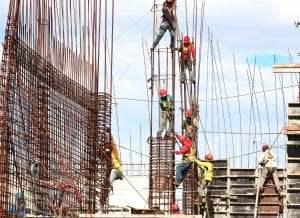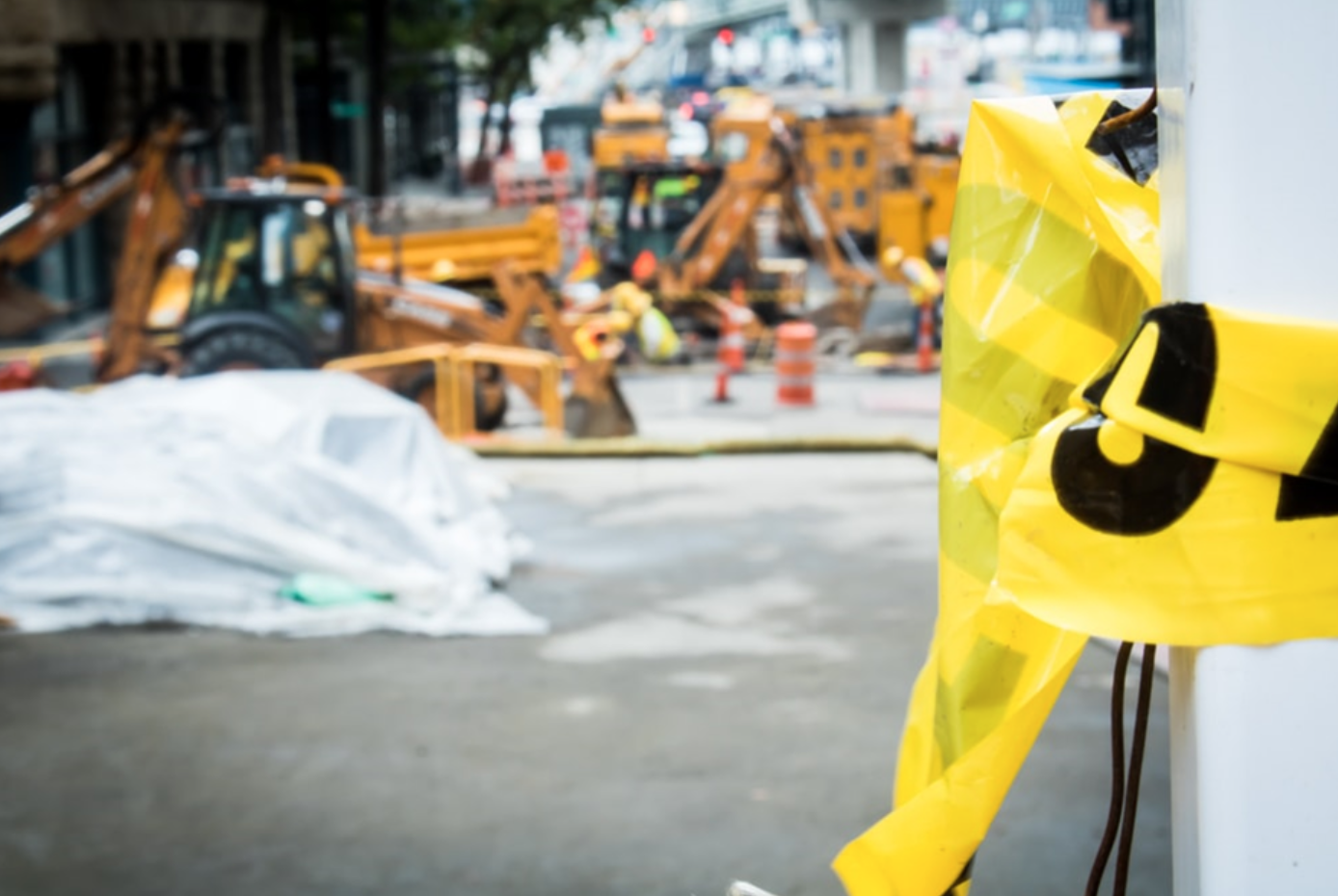Another risk on construction sites is being hit by a falling or flying object.
It’s no surprise that construction sites are a dangerous place, due to dangerous tools, large equipment, and heavy materials. Federal agency OSHA, the Occupational Safety and Health Administration, identifies four dangerous categories of injury that construction workers are most at risk of: falling, electrocution, being struck by an object, and getting caught or crushed.
According to an analysis of workers’ compensation claims by KSK Law, there were 174,100 reports of nonfatal injuries or illness from construction workers in 2020. While this wasn’t the industry with the most injury reports, the nature of construction sites means that injuries can be far more dangerous and deadly.
In order to increase construction site safety, OSHA provides a lot of information about these “Focus Four” or “Fatal Four” construction hazards. The reason these four are so heavily focused on is because they make up around 60% of all construction fatalities each year. Let’s take a closer look at each hazard.
Falling

Many construction projects involve building tall structures. Construction workers use scaffolding to support them as they work at these high heights, but sometimes this method fails. Falls from heights actually account for almost 40% of construction fatalities.
In addition to falling from heights, construction workers can fall at the same height, in a trip or fall accident. Although it sounds minor these can still be very dangerous, especially because on a construction site the fall could land you on something painful or dangerous, like heavy machinery. Another common injury is falling into a hole in the floor or wall, which is why OSHA requires employers to have guardrails and toeboards near all open holes.
Electrocution
Construction sites have a lot of electricity running through them, so it’s no surprise that electrocutions happen often. In 2015, construction workers accounted for 61% of all U.S. workplace electrocutions.
When working on a construction site, it’s vital to identify all sources of electricity before starting work. Be aware of power lines overhead, stay away from exposed wires, and make sure electric tools are being used safely. GFCI outlets should also be used as a safety precaution.
Being struck by an object
There are so many heavy objects on a construction site that would be very dangerous if they struck your head or body. According to OSHA, around 75% of struck-by fatalities involve heavy equipment like a truck or crane. It is vital that construction workers avoid standing next to large machinery and vehicles for this reason.
Another risk on construction sites is being hit by a falling or flying object. There is always a chance that a fellow worker on scaffolding could drop a power tool, so never stand below scaffolds. A variety of tasks during construction can lead to an object becoming airborne, which is why hardhats are always a good idea.
Getting caught in equipment or machinery
In 2015, 68 construction workers died from being caught in or between something, which was a 33% increase from 2011. There are so many types of construction machines and equipment that can be extremely dangerous when they fail or are used incorrectly. These “caught in/between” injuries can include workers who get stuck, pinched, squeezed, or crushed. Additionally, it’s possible for workers to fall into deep trenches where they drown or suffocate in some sort of material.
Construction Injury Liability
Like with all things on a construction site, there are safety guidelines in place to prevent experiencing one of the four hazards. It then becomes the responsibility of the employer to ensure that workers are aware of and following safety protocol.
When injuries or fatalities do happen, OSHA can charge fines to the building company to hold them responsible. However, the sued party can then contest the penalties and refuse to pay, leading to more legal proceedings. Liability for construction site injuries will end up depending on a few factors, including whether the workers were unionized or not. If a construction worker does get injured on the job, they should report it to their employer and then file a workers’ compensation claim.


Join the conversation!